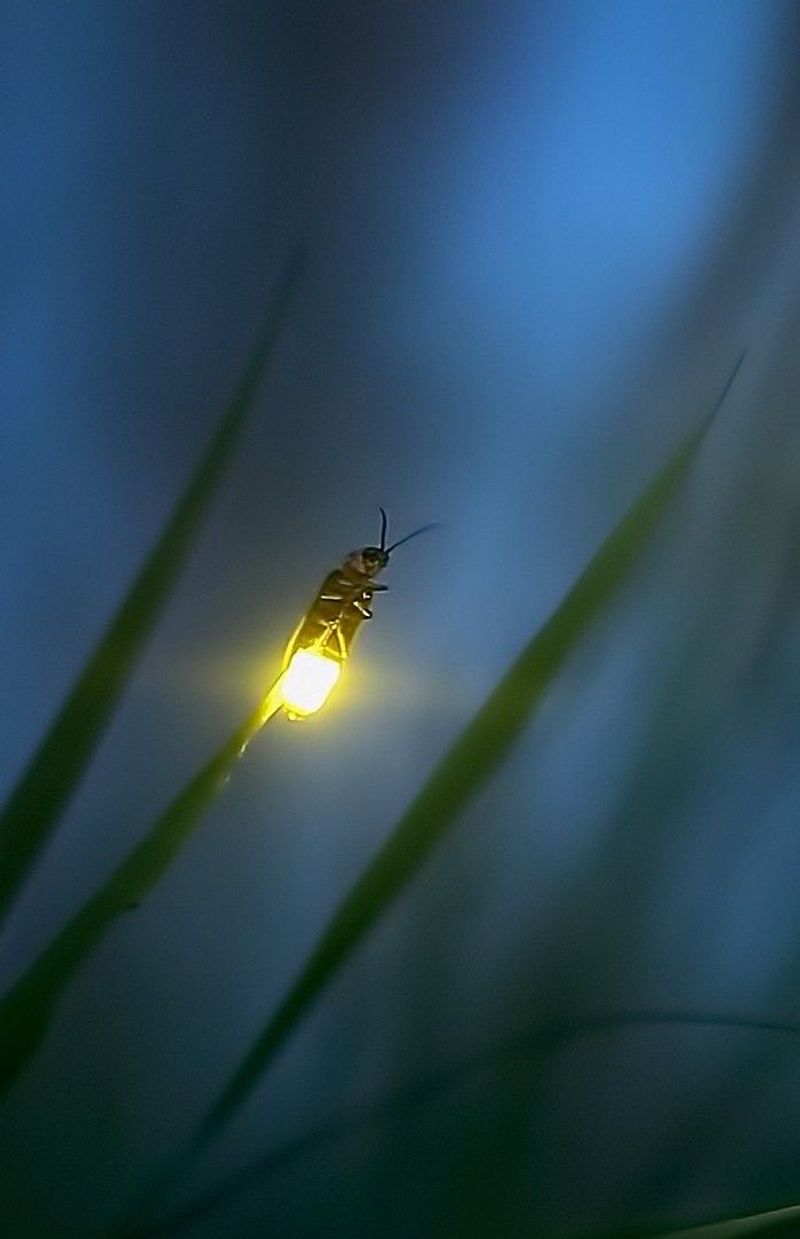Fireflies in Kentucky aren’t glowing the way they used to, and it’s becoming more noticeable. I’ve watched their numbers drop around my home and needed to know why.
Several environmental changes are affecting their survival. Understanding the reasons helps us protect these magical insects.
1. Light Pollution Drowns Out Nature’s Glow
Streetlights, porch lights, and bright signs are making it tough for fireflies to find mates in Kentucky. Male fireflies flash specific patterns to attract females, but artificial lighting confuses their signals.
When lights stay on all night, fireflies cannot communicate properly. Cities and suburbs across the state create so much brightness that these insects struggle to survive. Turning off unnecessary outdoor lights during summer evenings can actually help fireflies thrive again in your neighborhood.
2. Pesticides and Lawn Chemicals Are Deadly
Many Kentucky homeowners spray their yards with chemicals to kill mosquitoes and other bugs, but these products harm fireflies too. Firefly larvae live in the soil for up to two years before becoming adults.
Pesticides seep into the ground and poison young fireflies before they ever get a chance to glow. Even organic treatments can be dangerous to these delicate insects. Choosing natural lawn care methods helps protect firefly populations throughout the Bluegrass State and keeps your yard safer for wildlife.
3. Habitat Loss From Development
As Kentucky cities expand, forests and fields where fireflies live are being replaced with shopping centers and housing developments. Fireflies need specific environments with moist soil, tall grass, and rotting wood to complete their life cycle.
When construction crews clear land, they destroy firefly nurseries that took years to establish. Parks and natural areas are shrinking across the state, leaving fewer safe spaces for these insects. Protecting green spaces and creating firefly-friendly gardens can make a real difference in your Kentucky community.
4. Climate Change Disrupts Their Life Cycle
Fireflies depend on specific weather patterns to survive, but Kentucky’s changing climate is throwing off their natural rhythms. Warmer winters and unpredictable spring rains affect when fireflies emerge from the ground.
If adults appear too early or too late, they miss their mating season entirely. Droughts dry out the moist environments firefly larvae need to grow strong and healthy. Temperature shifts across the state are making it harder for fireflies to time their life stages correctly, leading to population declines year after year.
5. Lack of Rotting Wood and Leaf Litter
Kentucky yards have become too tidy for fireflies to thrive in recent decades. People rake up every fallen leaf and remove dead branches, but fireflies actually need this messy stuff to survive.
Larvae hide in leaf piles and hunt for snails and slugs among decaying wood. Without these natural features, firefly babies have nowhere to grow and nothing to eat. Leaving some areas of your Kentucky property a little wild gives fireflies the habitat they desperately need to complete their amazing transformation.
6. Invasive Species Compete for Resources
Non-native plants and animals are crowding out the species that fireflies depend on across Kentucky. Invasive plants like bush honeysuckle create thick undergrowth that changes soil conditions and blocks the open spaces fireflies prefer.
Foreign insects compete for the same food sources that firefly larvae need to survive. When ecosystems get out of balance, fireflies lose the battle for survival. Removing invasive species from your Kentucky property and planting native flowers and grasses helps restore the natural environment fireflies have adapted to over thousands of years.
7. Water Pollution Affects Firefly Food Sources
Streams and ponds across Kentucky are becoming contaminated with fertilizer runoff and other pollutants that harm the creatures fireflies eat. Firefly larvae feast on snails, slugs, and worms that live in and around water sources.
When pollution kills these prey animals, young fireflies starve before reaching adulthood. Contaminated water also makes the soil toxic for developing larvae. Keeping Kentucky waterways clean by reducing fertilizer use and preventing chemical runoff protects the entire food chain that fireflies depend on to survive and light up summer nights.








